An Introduction to Choice-Based Work Environments
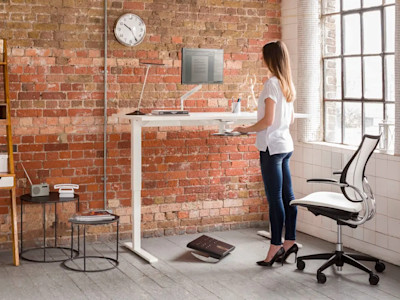
There was a time when the office represented routine and predictability. Employees arrived at the same hour, sat in the same chair, at the same desk, in the same tightly arranged rows. It was a system built for consistency, but not necessarily for creativity, well-being, or the way people work today. That system is quickly fading, replaced by a more human-centered approach: the choice-based work environment.
Choice-based environments allow employees to choose the setting that best supports the work they’re doing in the moment. Instead of being tethered to a single workstation, people move through a purposefully designed ecosystem. Quiet spaces for focus, lounges for collaboration, pods for privacy, and inspiring areas for creativity. This shift represents more than a change in furniture. It reflects a deeper evolution in how leaders think about productivity, autonomy, and the role of the workplace in a post-pandemic world.
Autonomy as a Performance Strategy
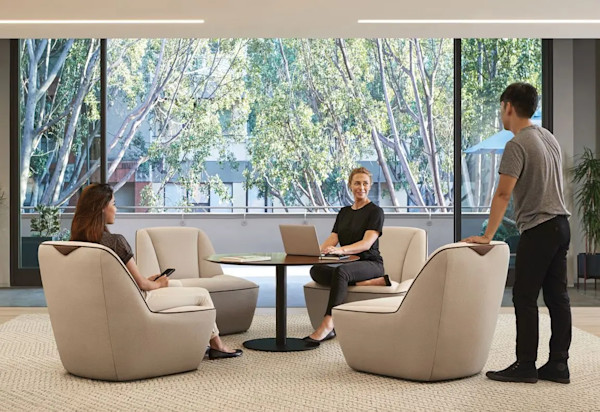
Organizational psychology has long shown that autonomy fuels performance. When people feel trusted to determine how and where they work, their motivation increases and with it, their creativity, ownership, and engagement. Assigned seating sends the message that employees need to be controlled or monitored. Choice, on the other hand, communicates trust.
In recent years, employees who experienced flexibility while working from home have grown more aware of the environments that best support their focus and well-being. Returning to rigid, one-size-fits-all workstations feels like moving backward. Leaders who embrace choice-based design are tapping directly into this desire for autonomy. By offering a variety of work zones, quiet, collaborative, casual, and private, they empower employees to align their environment with their task and their energy level throughout the day.
This isn’t just a perk. It’s a strategic approach to helping people do their best work.
Workspaces Must Change With Workflows
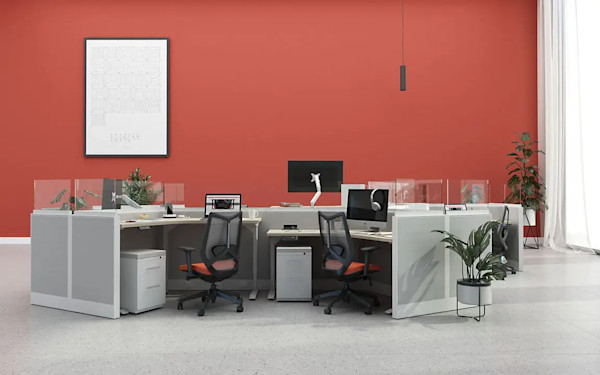
The nature of work today is far more fluid than it was even ten years ago. Employees shift rapidly between heads-down focus, team collaboration, hybrid meetings, spontaneous problem-solving, and restorative breaks. No single workstation can support all of these activities.
Modern office furniture has evolved to support this new reality. Leaders are gravitating toward modular, multi-functional pieces that make it easy to switch modes as the work demands. Soft seating encourages informal discussions. Mobile whiteboards enable quick ideation. Privacy booths support video calls and deep focus. Configurable lounge systems accommodate anything from solo reading to team retreats. When the environment adapts to the work instead of forcing people into rigid patterns, productivity naturally rises.
Organizations that design around how work actually happens, not how it has historically been structured, are positioning themselves for a more agile future.
A Better Answer for Hybrid Work

Hybrid work has introduced unpredictability into daily office life. Some days are quiet; others are filled with team energy. Assigned seating doesn’t account for these fluctuations and often results in rows of unused desks. Not only is this inefficient, but it subtly signals that the workplace hasn’t caught up with the new rhythm of work.
Choice-based environments, however, thrive under hybrid conditions. They accommodate fluctuating attendance, support spontaneous collaboration between in-office teammates, provide private spaces for virtual calls, and make more efficient use of square footage. The office becomes less about maintaining a permanent home base for each person and more about offering shared resources that amplify performance when employees choose to be on site.
Rather than designing for a world where everyone is present every day, leaders are shaping environments that embrace movement, flexibility, and intentional gathering.
The Office Must Be Worth the Commute
The question on many employees’ minds is simple: If I can do my work from home, what makes the office worth coming in for? Choice-based environments offer a compelling answer.
When the office provides a range of inspiring, carefully crafted settings, spaces for deep focus, areas that spark creativity, comfortable lounges for casual conversations, and quiet corners for reflection, it becomes a destination. Employees walk in and immediately see options, each designed to elevate different types of work. The environment becomes a partner in productivity, not an obstacle to it.
Instead of the familiar hum of fluorescent lights and a sea of identical desks, employees encounter an experience: one that energizes, motivates, and supports them throughout the day.
A More Human-Centered Approach to Well-Being
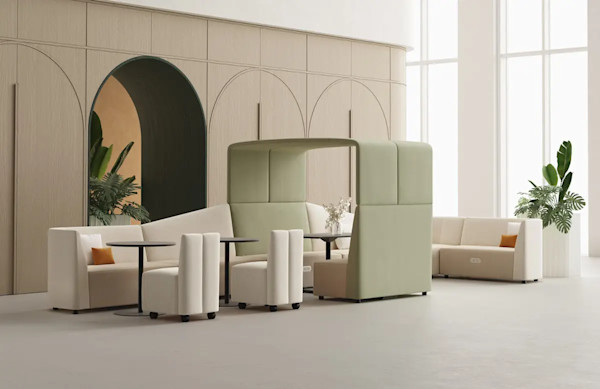
Well-being has become a central concern for today’s leaders, and the physical environment plays a powerful role in how people feel at work. Choice-based environments acknowledge that different employees need different conditions to thrive. Some prefer quiet, softer light, and low stimulation; others generate energy from movement and activity. A variety of settings ensures both can find what they need.
Ergonomics also improves when people have the freedom to move throughout the day instead of remaining in a single seated posture for hours. Lounge areas, standing-height tables, and different seating styles encourage natural movement, which reduces fatigue and keeps people more alert and engaged. In addition, warm, hospitality-inspired furnishings help counter workplace stress and create a welcoming sense of comfort and belonging.
In a world where burnout is increasingly common, leaders recognize that well-being isn’t a luxury; it’s foundational.
Your Culture Lives in Your Environment
A choice-based workplace sends a clear cultural message: We trust you. Trust isn’t conveyed in posters or slogans; it’s felt in everyday interactions, and the environment plays a major role. When employees are free to choose their workspace based on their needs, it reflects a culture built on empowerment rather than micromanagement. It’s a culture that values outcomes over oversight.
Employees who feel seen, respected, and supported show up differently. They collaborate more openly, take creative risks more confidently, and build stronger relationships with the organization and each other. In the long run, the environment becomes a driver of culture, not just a backdrop to it.
Looking Ahead: Offices as Dynamic Ecosystems
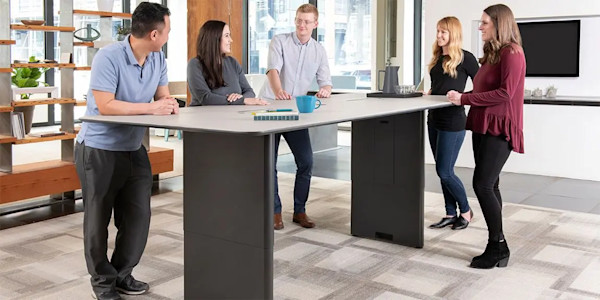
The office of the future is dynamic, not static. It’s not a set of desks. It’s an ecosystem designed to adapt to the rhythm of modern work. Leaders who prioritize choice-based environments are embracing this future and positioning their organizations to stay resilient in the face of change.
These environments scale easily as teams grow. They adjust to new technology. They evolve as work patterns shift. Most importantly, they support the one constant in today’s workplace: the need for flexibility.
The transition from assigned seating to empowered autonomy isn’t simply a design upgrade. It’s a reflection of a deeper truth about modern work. People perform best when they have the freedom to choose how they work best.
And in today’s fast-changing landscape, empowerment is the most valuable amenity any workplace can offer.
Want to learn more about the latest tips and trends in office design? Check out these related posts:



